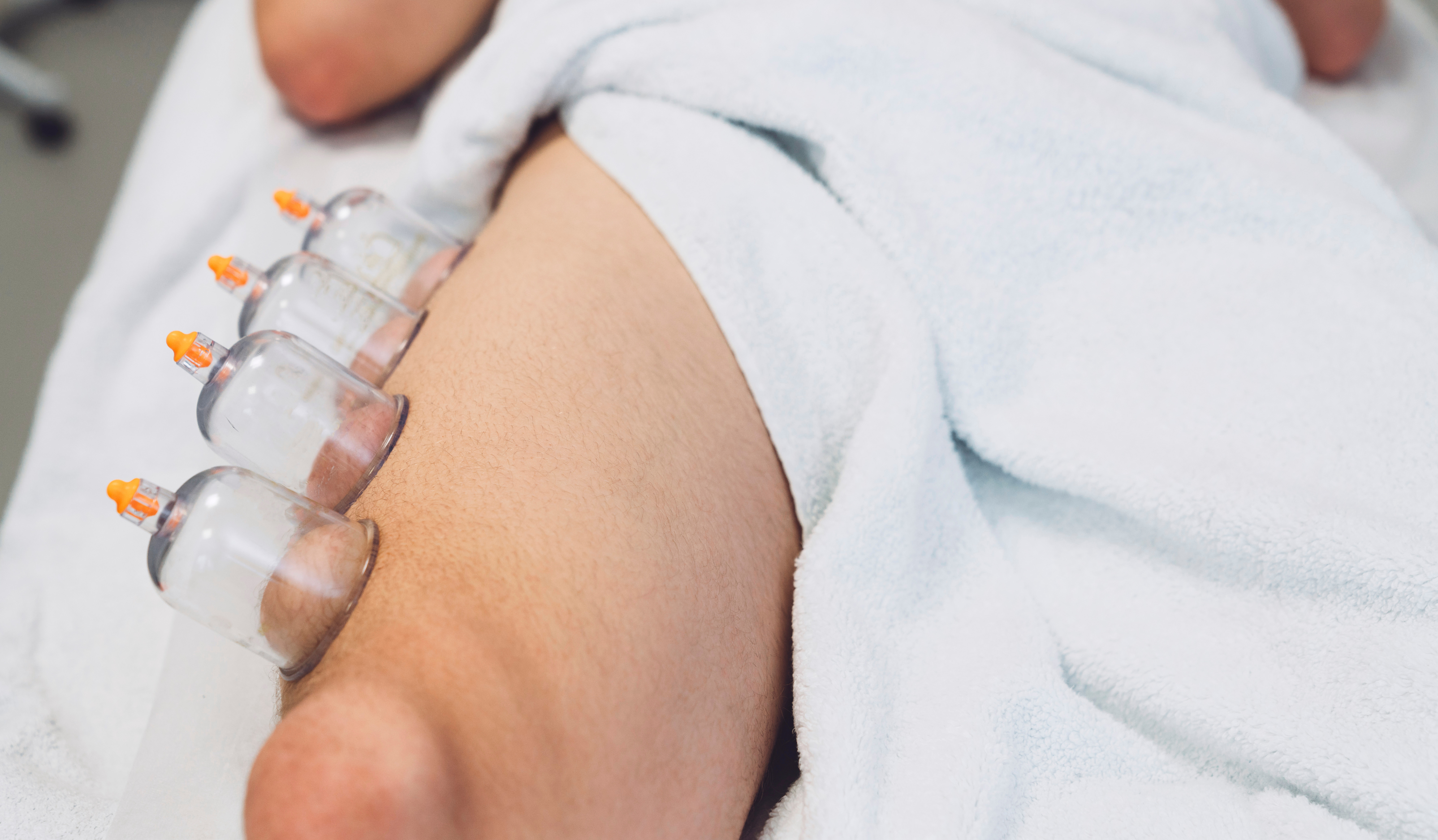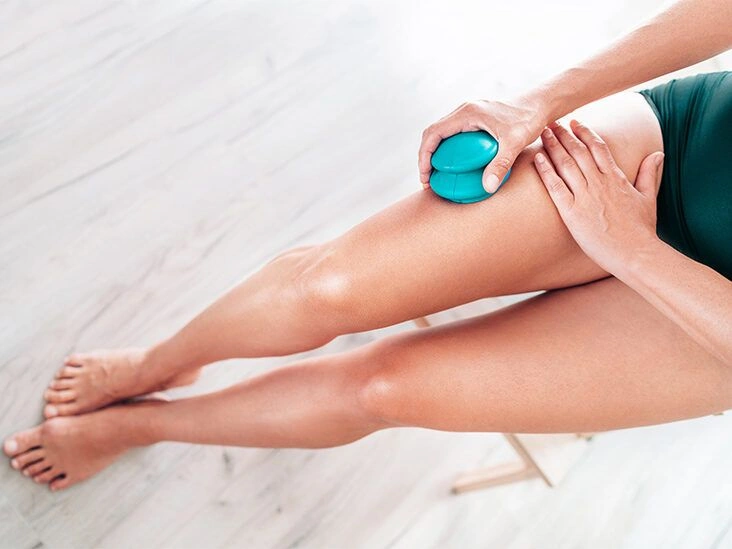Cupping is an age-old healing method used for millennia.
The technique entails placing heated cups with their open ends against the skin, creating suction that lifts superficial tissue into the cup.
A qualified practitioner may include cupping as one component of a broader treatment regimen.
Cellulite appears as dimpled fat just beneath the skin. It’s a common cosmetic concern, especially in women. It can develop anywhere on the body, but is most frequently seen on the:
- thighs
- hips
- buttocks
Although cellulite isn’t harmful to health, many people seek methods to improve its appearance. Complete elimination isn’t possible, so any improvements are typically temporary.
Cupping for cellulite aims to enhance skin appearance by encouraging the drainage of fluids and metabolic waste from tissues.
Scientific evidence on cupping is limited, but it suggests cupping might offer short-term improvement in cellulite appearance for some individuals.
Below, we examine what current studies indicate about cupping for cellulite and provide guidance on how to try it.
Does cupping help with cellulite?
The exact mechanisms behind cupping aren’t fully understood.
The prevailing idea is that negative pressure aids in mobilizing trapped fluids, waste materials, and other compounds—from interstitial fluid to blood and lymph capillaries, including lipids associated with cellulite.
It also enhances blood circulation.
Cupping can temporarily reduce the visible signs of cellulite, but such results are likely short-lived.
Practitioners use cups made of glass, bamboo, ceramic, or silicone. Suction is created by:
- heating the cup before applying it to the skin to remove oxygen
- attaching a vacuum pump to the cup
- massaging while gliding the cup (dry-moving cupping)
Wet cupping involves making small punctures so blood collects in the cup. Treating cellulite typically uses dry cupping, which does not break the skin.

What the studies show
There’s a scarcity of research focused specifically on cupping for cellulite or on its long-term outcomes.
A small pilot study from 2015 examined cupping for cellulite. It included 40 healthy women. Researchers reported that dry-moving cupping applied 10 times to each thigh over 5 weeks significantly reduced cellulite grading.
Overall, reviews have concluded there isn’t enough robust evidence to make strong claims about cupping; many available studies are low in quality.
Other potential benefits of cupping
Cupping has been applied to a variety of issues, from digestive complaints to pain control and visible veins.
A 2012 systematic review evaluated cupping’s effectiveness and found that, when combined with other interventions (such as medications or acupuncture), cupping showed added benefit over the other therapies alone for conditions including:
- acne
- cervical spondylosis
- facial paralysis
- herpes zoster
However, the review noted a high risk of bias in nearly all 135 trials analyzed, and emphasized the need for better-designed, larger studies.
A 2018 overview of the literature suggests cupping may also:
- increase blood flow to the skin
- raise pain tolerance
- reduce inflammation
- affect cellular immune responses
Are there risks associated with cupping for cellulite?
Cupping is noninvasive and generally safe for adults, but it’s not appropriate for everyone. Consult your doctor before trying cupping if you:
- are pregnant
- have cardiovascular disease
- take anticoagulant medications
- have a pacemaker
- have hemophilia
Avoid cupping over:
- sunburned skin
- open wounds or lesions
- recently injured areas
- broken bones
- varicose veins
- areas affected by deep vein thrombosis
Some discomfort is common, though most people do not find it painful. A few individuals report mild dizziness or nausea.
Skin discoloration
Cupping nearly always leaves visible marks. Expect bruising that can persist from several days to a few weeks.
There is also a risk of burns or permanent scarring in some cases.
Worsened skin conditions
If you have eczema, psoriasis, or another skin disorder, cupping could aggravate the condition. Consult a dermatologist beforehand.
Infection
Because cupping can cause minor bleeding, using unsterilized equipment risks transmitting blood-borne infections like hepatitis B and C.
Anemia
Although uncommon, repeated wet cupping sessions can lead to anemia due to blood loss.
How to use cupping for cellulite reduction
For most concerns, it’s advisable to see a trained cupping professional. That’s likely the safest route for treating cellulite, but some people choose to try it themselves.
At a practitioner’s office
Cupping is offered by various professionals, including:
- acupuncturists
- massage therapists
- physical therapists
Before booking, verify the practitioner’s experience and ensure all instruments are properly disinfected between clients.
No special preparation is required besides having clean skin. Inform the provider of any cuts or injuries on the areas to be treated.
At home
If you prefer DIY, know that cups come in multiple sizes, suction strengths, and application methods. For beginners, consider buying a kit designed for cellulite cupping.
Glass cups can cause more bruising and may be harder to handle solo. Silicone cups usually bruise less and are user-friendly.
Use larger cups for thighs and buttocks and smaller ones for arms and calves. Whatever type you choose, ensure they are clean and sterile.
To perform cupping at home, follow these steps:
- Apply body lotion or massage oil to the target area. You can do this in the shower if you prefer.
- Select a starting spot and place the cup against your skin.
- Squeeze the cup gently to create suction; you’ll feel the skin being drawn up.
- Let go of the squeeze and glide the cup back and forth or in circles.
- Continue this motion for about 10 to 15 minutes per area.
- Repeat two to three times weekly for as long as you continue treatment.
Where to purchase cupping supplies
Cupping kits and accessories are sold at health and beauty stores, pharmacies, department stores, and online retailers.
While professionals may use glass, home sets commonly include silicone cups, which are less costly. Kits are available individually or in bundles that often contain:
- various-sized cups
- massage oils
- a massager
- a carrying case
Shop for cupping supplies online.
Bottom line
Cellulite is persistent and cannot be completely removed. If you opt to try cupping, be aware it may take several sessions to get comfortable with the technique—or to notice any improvement.
If the procedure is tolerable and you observe an improvement, the potential downsides are limited. Cupping has a long history and is generally considered a reasonably safe practice when performed properly.


















Leave a Reply
You must be logged in to post a comment.